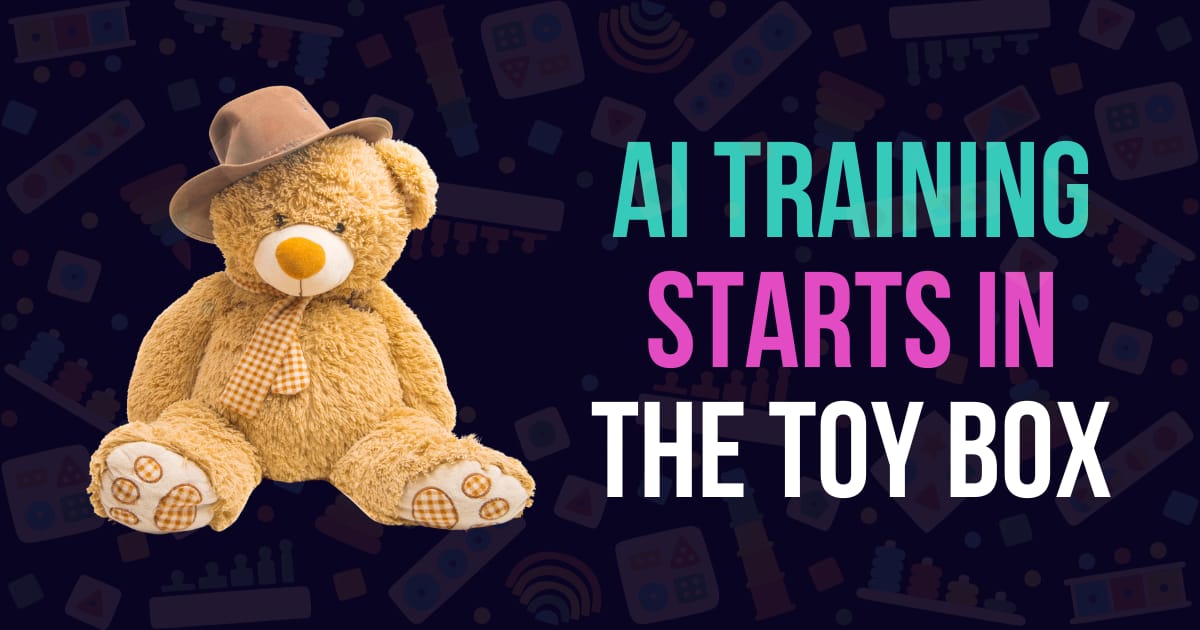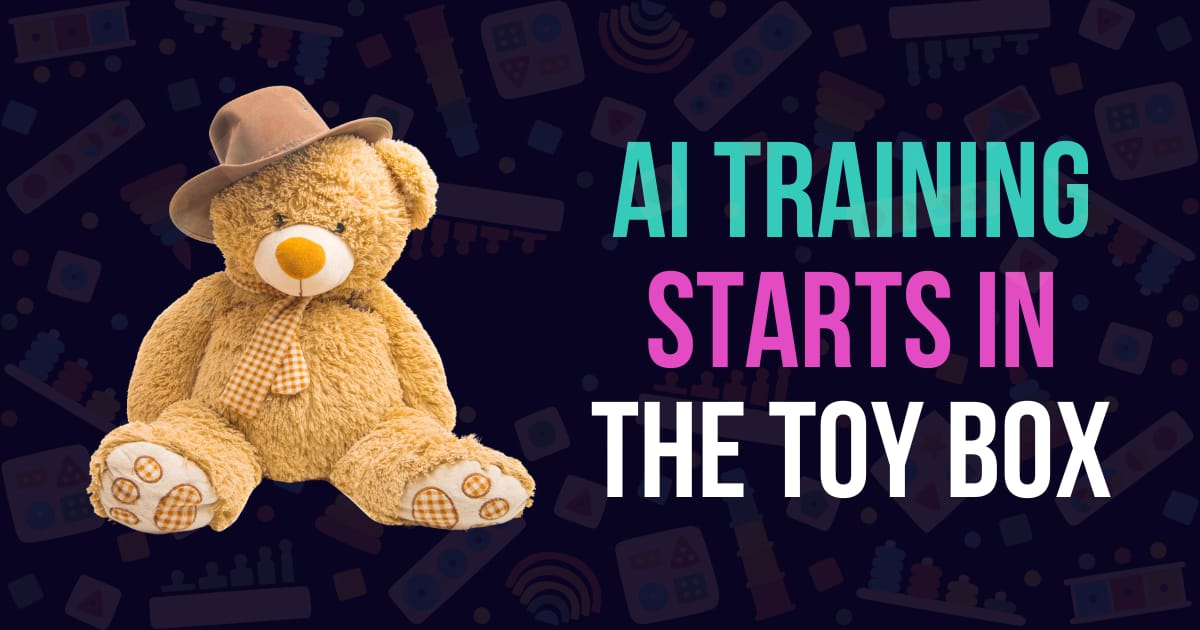- Enterprise AI Daily
- Posts
- From Playroom to Powerhouse
From Playroom to Powerhouse
China’s AI toys reveal the future of user interfaces, data wars, and global soft power

AI dolls are learning Mandarin, Amazon is laying off hundreds of white-collar workers, and the U.S. is building a scientific megabrain with Oracle, NVIDIA, and the Department of Energy.
In today’s briefing, we’re connecting dots across childlike interfaces and global power plays, because the same tech that entertains a toddler is training to dominate the global AI race.
Let’s break it down.
Will A Book Grow Your Business?
No one buys a beach house from book sales—they buy it from what the book makes possible.
Author.Inc helps founders turn ideas into world-class books that build revenue, reputation, and reach.
Book a free 15-minute ROI call to see if your book is a go—or a smart wait.

Enterprise AI Group
AI Toys Aren’t Child’s Play
China’s next export might not be steel or semiconductors, but AI-powered toys instead. We’re talking about children’s dolls, plush animals, and action figures equipped with natural language processing, speech generation, and the kind of personality that is way out of Siri’s league. So they aren’t just building the future of AI infrastructure, they’re engineering how the next generation uses it, one cuddly companion at a time.
Let’s start with the numbers:
China’s smart toy market is projected to surpass ¥100 billion ($14 billion) by 2030, per the Shenzhen Toy Industry Association and JD.com.
The AI-powered segment is growing nearly twice as fast as the traditional toy industry, with IMARC projecting a national CAGR of over 11% through 2032.
According to China’s Qichamao corporate registry, more than 1,500 AI toy companies are already operating in China as of October 2025, and more are emerging monthly.
Globally, the AI toy market is expected to exceed $35B by 2032, led by interactive robotics, NLP, and learning assistants.
Why it matters: Chinese startups are deploying toys that can talk, learn, and even adapt their accents to better bond with kids. They’re sold as educational tools, but make no mistake, these are tiny consumer-grade copilots training the next generation in how to speak, think, and interface with AI. It’s about funneling data, shaping norms, and building a nation-scale onboarding ramp to AI.
China is using toys as user interface training wheels, and every interaction generates conversational data, emotional pattern recognition, and insight into how people learn from machines. It’s both cute and strategically brilliant.
Three enterprise-level implications:
Data sovereignty is starting in the sandbox.
Every "What’s the weather?" and “Tell me a story” spoken by a four-year-old is another brick in the foundation of China’s conversational AI stack. While U.S. firms are still navigating parental consent forms and privacy regulation, Chinese companies are shipping toys with real-time feedback loops and embedded model tuning. Whoever owns the early data owns the future behavior.Interface expectations are being hardcoded young.
Today’s children are growing up expecting AI to talk back, personalize instantly, and understand emotional nuance. By the time they hit the workforce, clunky enterprise dashboards will feel prehistoric. Companies that ignore this shift in UX expectations will struggle to retain both users and talent.AI soft power is a retail strategy.
Toys with Chinese-developed large models, personalities, and cultural coding are reaching global markets, potentially shaping international trust in Chinese AI brands before the end user ever logs into a SaaS platform. Expect to see more of this logic applied to wearables, consumer assistants, and even enterprise hardware.
And yes, U.S. regulators are watching. The White House is reportedly considering tighter restrictions on AI-enabled exports from China, especially when tied to surveillance or child data. But it’s unlikely enforcement will outrun adoption.
The global AI race isn’t just about chips and compute, it’s about data. And we’re running out of the good stuff. High-quality, diverse, real-world conversational data is becoming the scarcest resource in the AI stack.
China may have found a workaround. By turning toys into ubiquitous, voice-first data collectors embedded in daily life, they’re building a renewable pipeline of emotionally rich, interaction-ready training data at international scale. It’s a masterstroke of soft power meets technical foresight.
But it’s also a warning shot. As AI seeps into every corner of our lives, from bedtime stories to bathroom mirrors, we have to ask: who owns the interface, the data, and the influence? Protecting user privacy, especially for children and other vulnerable groups, can’t be an afterthought in this race.
Still, from a strategic perspective, it’s a calculated move to secure long-term data dominance in the next era of AI.
Go from AI overwhelmed to AI savvy professional
AI will eliminate 300 million jobs in the next 5 years.
Yours doesn't have to be one of them.
Here's how to future-proof your career:
Join the Superhuman AI newsletter - read by 1M+ professionals
Learn AI skills in 3 mins a day
Become the AI expert on your team

Enterprise AI Group // Created with Midjourney
News Roundup
Amazon slashes 500+ corporate roles in AWS & Alexa divisions
The company cites AI efficiencies as part of the restructuring. Classic "AI giveth, AI taketh away" moment. The cuts hit teams working on Alexa AI and Just Walk Out tech.
Read more →NVIDIA + Oracle + US Energy Department = AI supercomputer
The “Eos” system is designed to accelerate scientific discovery with 40,000+ GPUs and a focus on climate, biology, and materials science. Translation: expect faster breakthroughs, and maybe a bump in your cloud compute bill.
Read more →Saudi Arabia wants to be the world’s leading AI exporter
From funding global chip factories to hosting “AI Davos,” the Kingdom is going all-in on becoming a global AI supplier: part prestige play, part economic pivot.
Read more →
TL;DR:
Chinese AI toys are building next-gen user habits, and massive datasets.
Voice-first, personality-rich interfaces are the new enterprise standard.
Amazon's layoffs show AI serves for both automation and workforce restructuring.
The U.S. is flexing scientific muscle with a new AI supercomputer.
Saudi Arabia wants to sell you your next LLM infrastructure.
Stay sharp,
Cat Valverde
Founder, Enterprise AI Group
Navigating Tomorrow’s Tech Landscape Together

